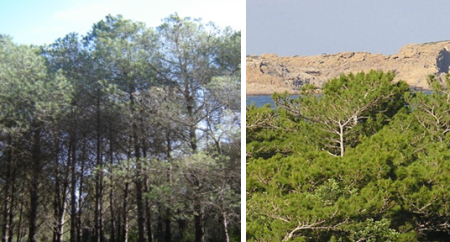
Objective:
The aim of this work was to enhance the extraction technique of pine needles active molecules to valorize the non used needles.
Context:
The calabrian pine (pinus brutia) is a tree of the genus pinus and the family pinaceae. Its geographical distribution is generally the eastern Mediterranean. Brutia pine can be used for wood production purposes, as well as its resin which can be used for the manufacture of cosmetic and medicinal products. However, the exploitation of these bio-resources is still limited. To valorise and exploit the potential of this specie in Tunisia, we have studied the production of essential oils and the search for active molecules.
Contacts:
Meriam Rezgui, mariem.rezgui.13@gmail.com, http://www.inrgref.agrinet.tn/
Mariem Zakraoui, mariem.zakraoui@gmail.com, http://www.inrgref.agrinet.tn/
Lamia Hamrouni, hamrounilam@yahoo.fr, http://www.inrgref.agrinet.tn/
Further information:
M. Hmamouchi*, J. Hamarnouchi and M. Zouhdi (2001). Chemical and Antimicrobial Properties of Essential Oils of Five Moroccan Pinaceae. J. Essent. Oil Res., 13, 298-302.
Shahpour Khangholi et Ayatollah Zaeinodehi (2008). Effect of drying temperature on Essential Oil Content and composition of sweet Wormwood (Artemisia annua) Growing wild in Iran. Pakistan journal of Biological Sciences 11 (6): 934-937, 2008.